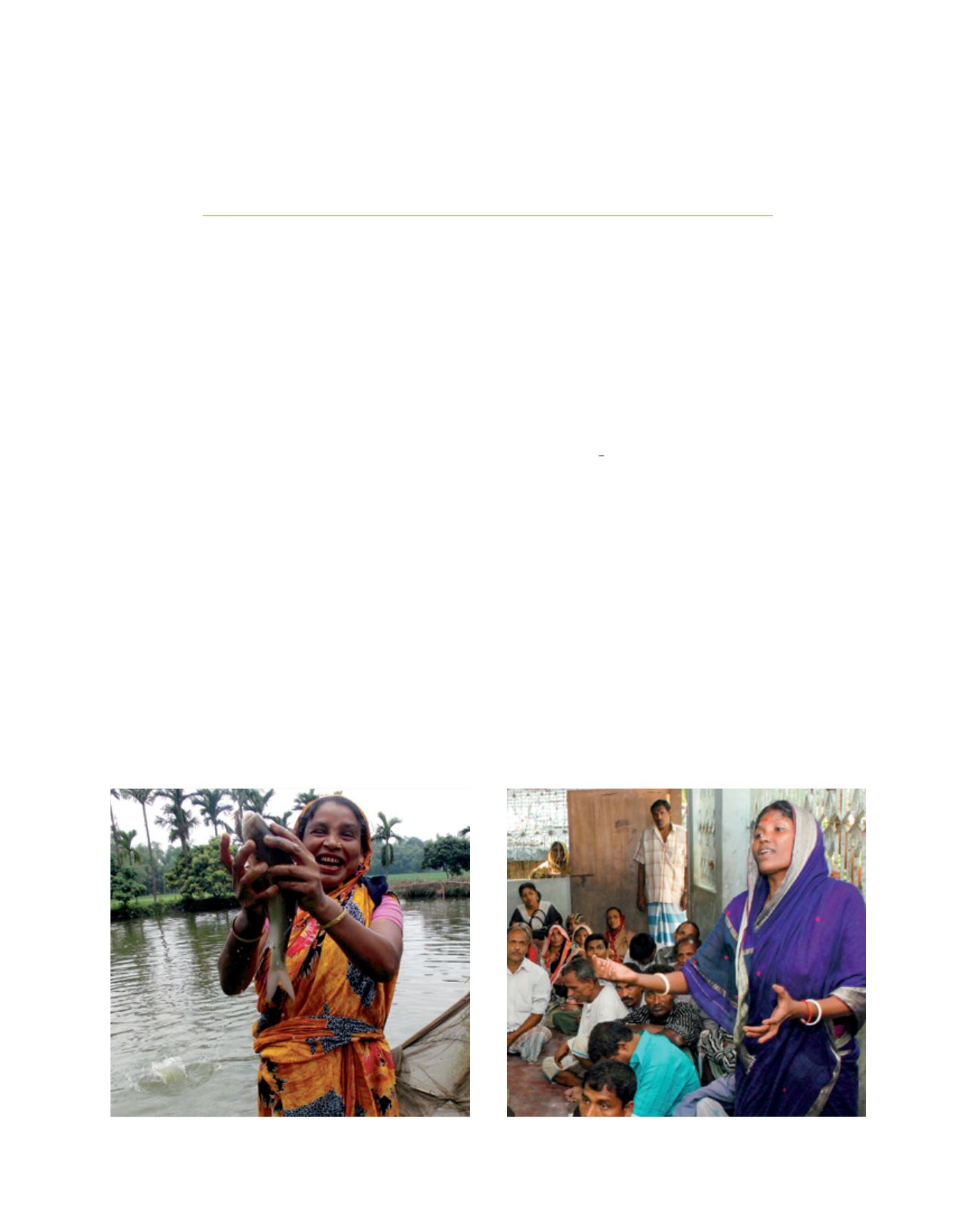

[
] 139
Sustaining small-scale fishers and
fish farming families in South Asia
Yugraj Singh Yadava, Director, Rajdeep Mukherjee, Policy Analyst, Md. Sharif Uddin,
Fisheries Resource Officer, Bay of Bengal Programme Inter-Governmental Organisation
T
he fisheries sector constitutes an important
economic activity in the maritime nations of South
Asia. Its importance lies in creating millions of jobs
in capture fisheries as well as fish farming (also referred
to as aquaculture), ensuring food security and earning
considerable amounts of foreign exchange.
The small-scale fishers and fish farming families of Bangladesh,
India, Maldives and Sri Lanka are also members of the Bay of
Bengal Programme Inter-Governmental Organisation (BOBP-
IGO). Bangladesh and India are coastal countries while Sri
Lanka is an island and Maldives is a chain of atolls. As such
the countries are considerably different in their abundance
of fisheries and fish farming-related resources, communities
and fishing and aquaculture practices. However, what binds
them is the significant dependence on fisheries both to meet
nutritional requirements and to ensure livelihoods.
The sector contributes on an average 1.5 per cent to 2.0
per cent of gross domestic product (GDP) in Bangladesh,
India and Sri Lanka and about 5 per cent of GDP in Maldives.
India and Bangladesh are also major global players in capture
fisheries and aquaculture, ranking among the top 10 fishing
nations in the world. These countries are also leading export-
ers of fisheries products, catering to major markets in Europe,
the USA and Japan. Fish is a staple diet in Bangladesh and
Maldives and highly favoured in Sri Lanka and India.
For a larger part of its history, fisheries in South Asia largely
remain an activity that can be identified as subsistence and, to an
extent, artisanal,
1
where the family plays a major role in harvest-
ing and utilization of fishery resources. In these family enterprises,
men are usually involved in harvesting and women in prepara-
tion and post-harvesting activities. With the expansion of markets
and increasing demand, capture fisheries and fish farming are
becoming increasingly commercial and market values are now
well-enshrined in fisheries practices. However, in terms of their
productive assets (fishing vessel or landholding), fisheries and fish
farming activities in the region are still small-scale
2
in nature.
The fisheries production in SouthAsia (comprising both capture
fisheries and aquaculture) now stands at about 12.9million tonnes
(2012), increasing from about 11.6 million tonnes in 2011. Both
capture fisheries (8.25 per cent) and aquaculture (14.1 per cent)
production has increased considerably during this period.
Marine capture fisheries
Marine capture fisheries form an important source of liveli-
hoods along the coastline in South Asia. The region is host to
A Bangladesh women fish farmer showing a carp netted from the family pond
Ms Anarkali, a social worker and activist from the Bangladesh fisher-community
Image: Md Nahiduzzaman, Worldfish, Bangladesh
Image: S Jayaraj, BOBP-IGO
D
eep
R
oots
















